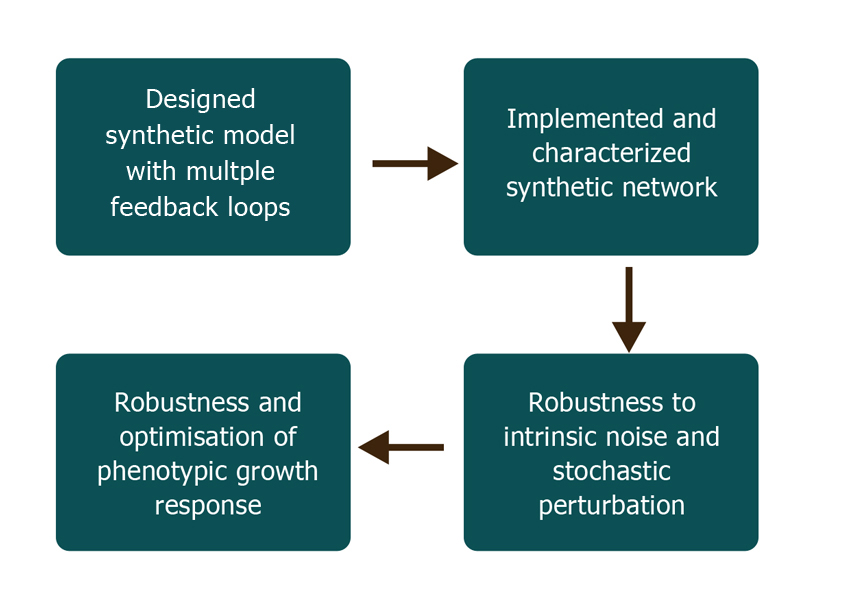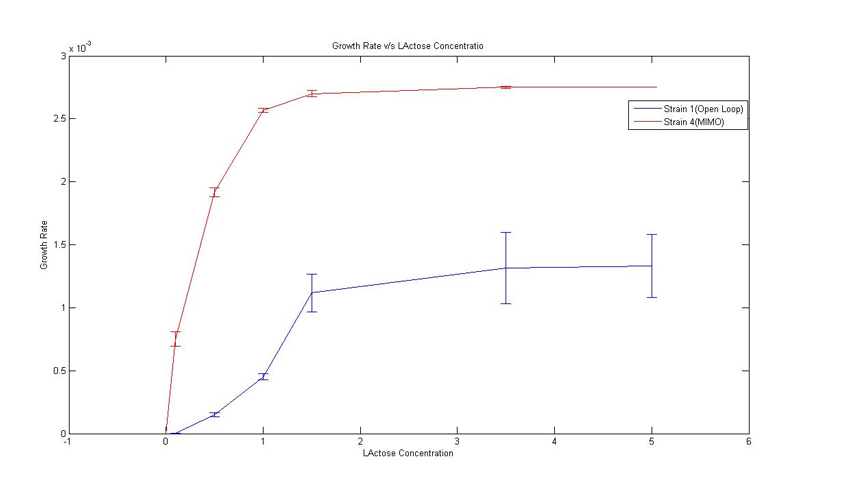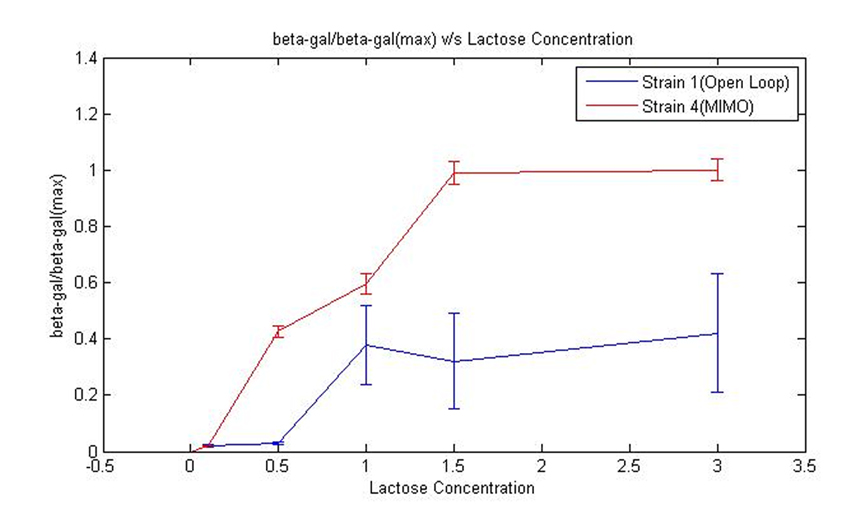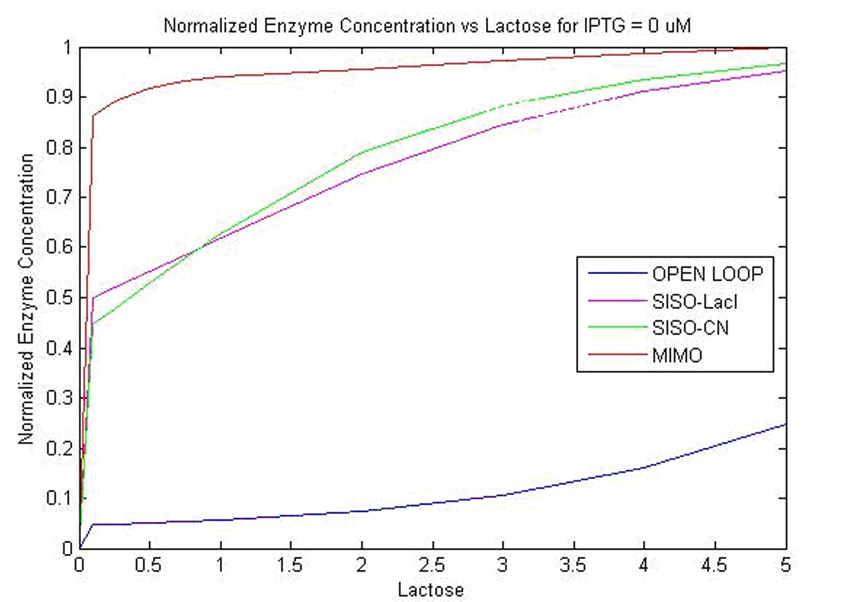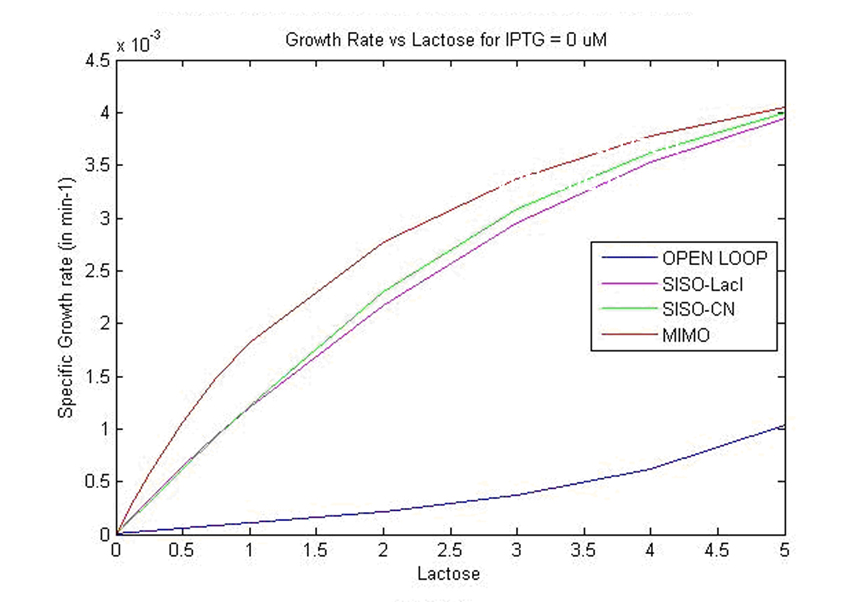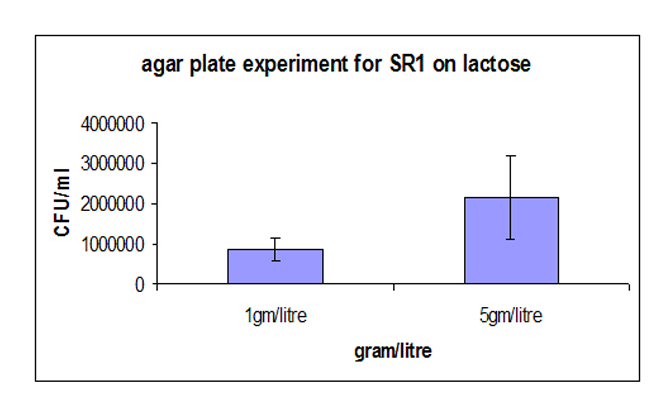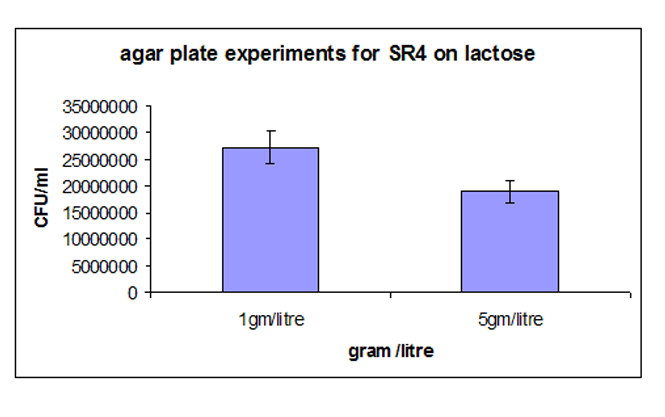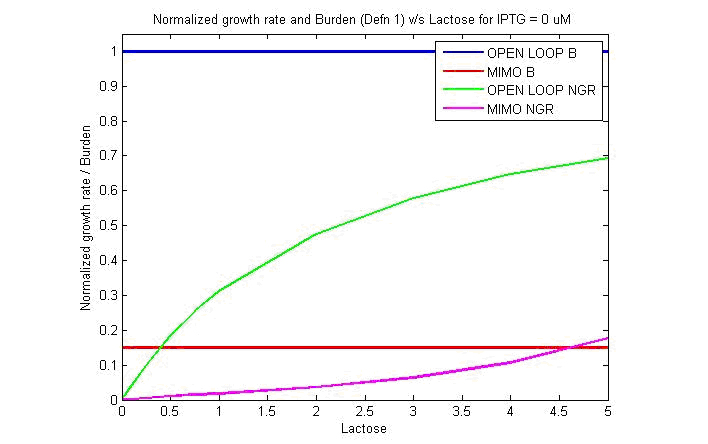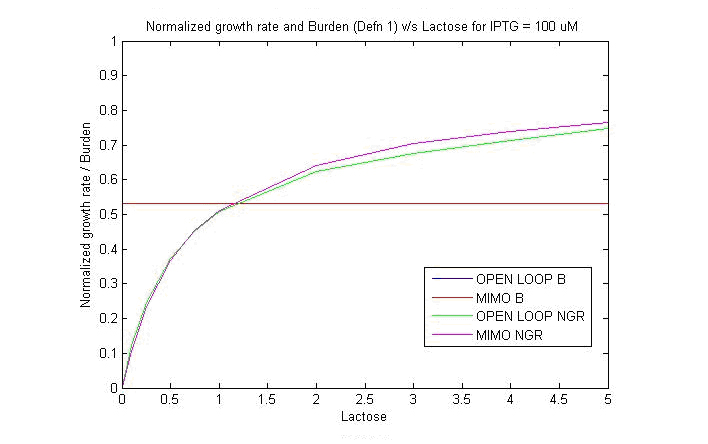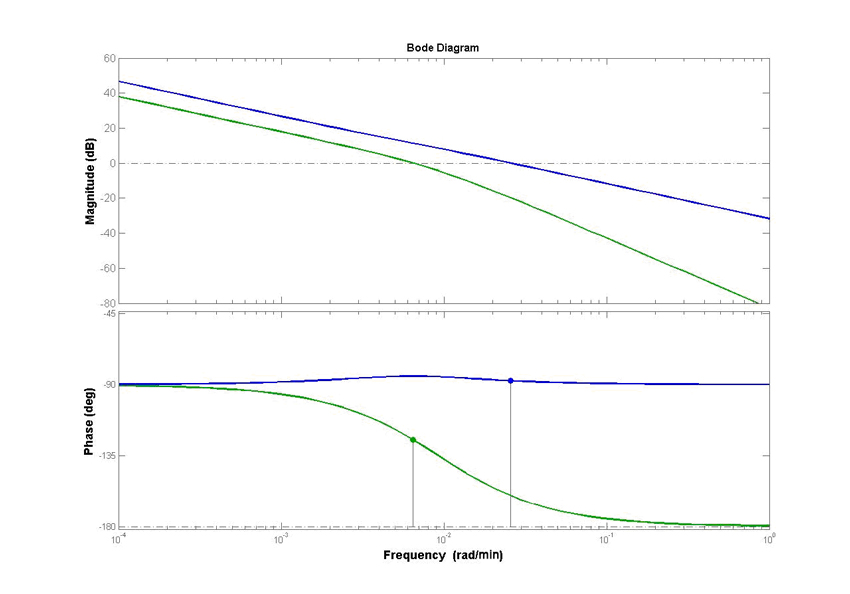Team:IIT Bombay India/Project
From 2009.igem.org
| Home | The Team | The Project | Analysis | Modeling | Notebook | Safety |
|---|
Analysis of multiple feed-backs in biological systems |
| Objective
In our project, we wanted to quantify how the protein expression in a cell changes due to presence of multiple feedback loops. We developed 4 mutant strains of E. coli. Beta-galactosidase responsible for growth on lactose medium was then used to characterize the phenotypic property of specific growth rate. Experimental results were used to verify the simulated models.
Methodology Experimental We transformed the four constructs in an E. coli strain with no intrinsic LacI. Using the 4 strains we characterized YFP expression, beta-galactosidase and Growth rate. We conducted our experiments in two parts, first growth on other medium and then growth on lactose media keeping IPTG constant.
In simulation we applied a gamut of simulation techniques to quantify our model. We developed a kinetics based model for the 4 strains and used it to quantify the dynamic and steady state profiles. Using Langevin approach, we applied stochastic model to simplified logistics equations. We linearised the dynamic model around a set point and converted the dynamic model to transfer function domain (s), we then did frequency response from control theory and generated the magnitude and phase Bode plot.
1. Steady state value of YFP v/s IPTG: For Strain1 and 2, increase in IPTG, does not affect the YFP. For Strain 3 and 4, increase in IPTG increases YFP expressions. Here experimental results do not correlate with simulation results as strain 3 lies above strain 4. It can be noted that the variability in the distribution of YFP as characterized by FACS demonstrated that Strain-4 had the minimum variability in protein expression indicating lower noise. 2. Growth on Lactose for Strain 1 and 4: We obtained specific growth rate and normalized beta-gal expression on lactose. In strain 4, we observe that standard deviation is less as compared to strain 1. We also have a comparison of the results obtained from simulation. The growth rate on lactose of Strain-1 was lower as compared to Strain-4. Further, the growth of Strain-4 was more sensitive to lower concentration than that observed in Strain-1. The variability in the growth rate was lower for strain-4 indicating that the multiple feedback loop yields robust protein expression which translates to stable growth rates. These experiments also demonstrate that the intrinsic noise at the protein expression translates to the phenotypic respose as characterized by growth.
3. Agar plate experiment: Strain-4 demonstrated higher colony forming unit as compared to strain-1. The increase was about 40%. The interesting fact was that the deviation observed in Strain-4 was less compared to that of Strain-1, reiterating the fact that the noise at the protein level was translated to the phenotypic level. Simulations
3. Control theory approach We have done frequency response analysis on the linear system using magnitude and phase Bode plots. The phase margin for strain 4 is 92.2 deg while phase margin for strain 3 is 56 deg. This indicates better ability in response to delays in production of LacI and replication of copy number. Further, we have done magnitude bode plot for the sensitivity function to determine sensitivity of the system. The bandwidth for strain 4 is 0.0255 rad/min while bandwidth for strain 3 is 0.00428 rad/min. For system with 1000 µM IPTG, the magnitude and phase bode plots are given as below: The phase margin difference is not that significant. It is 70 deg for strain 4 and 64 deg for strain 3. The magnitude bode plot for the sensitivity function shows lower bandwidth of 0.0061 rad/min for strain 4 and 0.0078 rad/min.
Conclusions We characterized a phenotypic property of a cell (growth) with the help of synthetic genetic circuits. We proved that the specific growth rate on lactose was optimized in the mutant strain containing multiple feedbacks. The noise or variance associated with the protein expression of a MIMO strain was comparatively lower than that of Open loop strain containing zero feedbacks.
Future work 1. Experimental analysis of CFP: Due to unavailability of cyan laser filter for FACs we were unable to do CFP expressions. By December 2009, we aim to generate CFP expression profiles for the four strains. 2. More experimentation for different values of lactose and IPTG, to get more data for beta-gal expressions and growth rate for all 4 strains 3. Detailed model: Accurately finding the kinetic constants from literature and utilizing them to accurately correlate with the experimental results; 4. Stochastic Analysis:- To develop a simplified model for growth and to introduce stochasticity in the same and characterize the inherent noise in the system. 5. Control analysis: We have done the analysis for only one kind of feedback system. We could use different feedback systems characterized by different Hill-Coefficients and try to do further analysis on the same lines as the analysis done here.
|
 "
"

